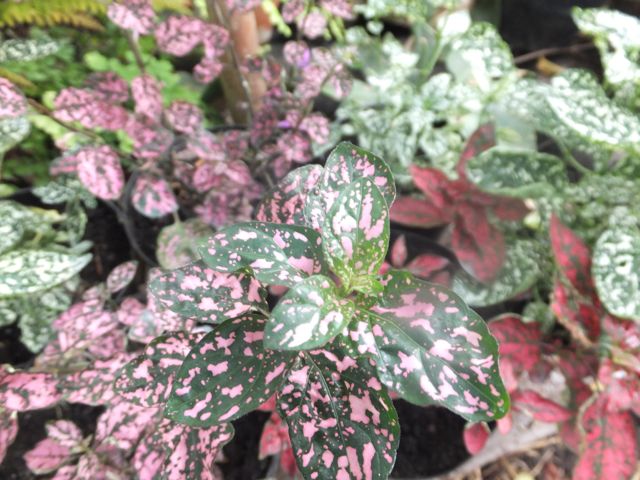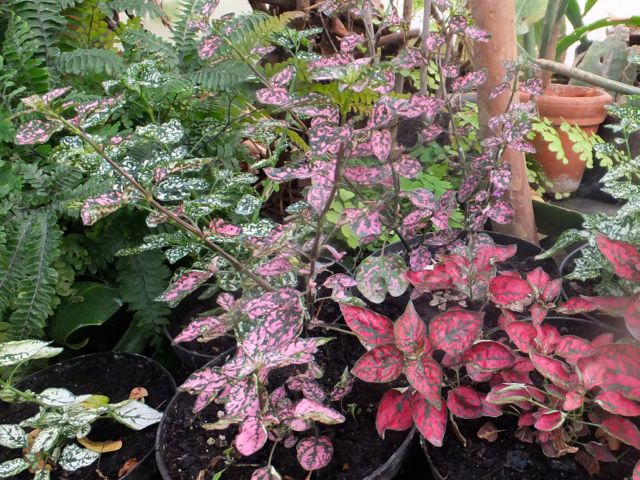 Easy in a frost free greenhouse, conservatory or as a houseplant the Fittonias are unsung heroes. If you’ve ever been on a tropical or sub-tropical holiday you probably saw them often yet did not notice them. Or did but never quite worked out what they were.
Easy in a frost free greenhouse, conservatory or as a houseplant the Fittonias are unsung heroes. If you’ve ever been on a tropical or sub-tropical holiday you probably saw them often yet did not notice them. Or did but never quite worked out what they were.
Rumoured to have originated in Peru these decorative yet unobtrusive ornamental sub-shrubs have successfully invaded most warmer countries. Their foliage in size, shape and form is clean and tidy but not at all distinctive, neither is their lax, low growing habit. Their pretty flowers in blueish purple or red are small and well hidden. Ah, but the filigree effect of netting on their leaves is so appealing. This variegation changes with species and hybrids with strong white, pink or wine red veins set on healthy light to dark green almost purplish paper thin leaves. Thus being pleasing but not obtrusive Fittonias provide a convenient background for other more flamboyant plants. Sort of plant wallpaper.
This is made easy by their ease of culture. They grow readily from stem cuttings, quicker with a little bottom heat. Fittonias are not fussy about compost within reason, nor pot size though obviously bigger will lead to a bigger plant. Their watering regime is not difficult as they don’t drown or wilt readily. They need no more than frost free to warm conditions and are not prone to pests and disease. To be fair they do not like full on sun coming from the light or dappled shade of the tropical understory. This means in the UK they are okay in almost any position under cover but look better and last in good condition longer if not hot and parched.
Even more convenient is their naturally low growing habit as they can be pruned or just sheared back if getting too large, though the lax habit means they often just fit under and around other plants. Fittonias are also good in hanging baskets when they will hang over making a ball up to a couple of feet across.
they will hang over making a ball up to a couple of feet across.
Three very similar species are available though it is suspected some commercial clones have some hybridisation. The originals are: F. verschaffelti with dark green oval leaves with deep red veins. F. v. argyroneura with vivid green leaves netted with silvery white veins. And F. v. pearcei with larger leaves green with rose pink veins. Very similar plants in every way are the closely related Chaemaeranthemums and Hypoestes.
-oh yes, and their name; it’s in honour of Elizabeth and Sarah Mary Fitton authors of an important early book Conversations in Botany (1817).










